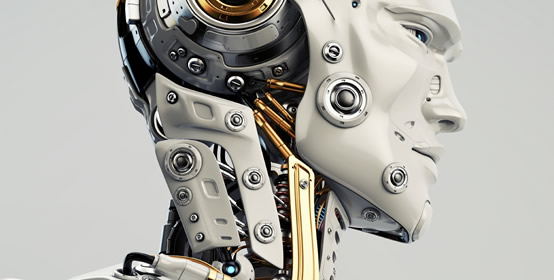
Society is on the cusp of the robot revolution that has been predicted for generations. Some have romanticized the notion and dreamed about living in a society with flying cars and robot housekeepers, while others have strongly warned against advanced artificial intelligence that will surpass human intelligence and ultimately destroy humanity. Regardless of your opinion on the subject, it’s clear that the revolution is here and beginning to irreversibly alter our society. Here are some of the latest news regarding robots and their place in today’s world.
Hermes has developed an intriguing self-driving robot that can perform delivery services. One delivery firm, Just Eat, has taken the initiative to test out this new technology. Their bots can carry up to 10 kg and drive up to 4mph. Products are secure in one of the bot’s compartments, and it only opens with a specific access code that is sent to the customer’s phone. Currently, a human operator supervises each robo-delivery, but in the future they hope to see the autonomous bots doing most of the leg work.
Just Eat is not the only company experimenting with such ideas. Amazon has teased their customers with the idea of future unmanned drone deliveries. The products are being developed, but there are major air regulations that could possibly prevent the widespread use of drones.
The police force in Rio de Janerio have enlisted the help of robotic assistants in their fight against drug traffickers, terrorists and other criminals. The bot is capable of sniffing out explosives in packages or alleyways. Keeping its human co-workers out of harm’s way, the robot identifies and removes any explosive threats.
The tactic of recruiting militarized bots into various police organizations is a growing trend around the globe. Unmanned drones are often used in surveillance missions, and there are dozens of robot prototypes currently in production. Brazil, however, has lagged behind other countries due to a lack of police funding. Major international events, like the 2016 Olympics and Pope Francis’ 2013 visit, led to the purchase of these bomb-sniffing robots that were eventually divided up among Brazil’s police force. Much of the expensive equipment has since been decommissioned because the cost of maintenance is too high, but Brazil’s police force hopes to adopt more robot counterparts in the future.
According to a survey conducted by the National Association of Home Builders, homebuilders agree that the labor crunch is the biggest hurdle and cost-driver in the industry. The industry is likely to face an additional labor shortage with the decrease in immigrant labor. To combat these issues, companies like Blueprint Robotics are taking advantage of new robotic technology to reinvent the old idea of home-building kits.
The company builds houses using automated robots to construct lego-like house pieces and then stack the pieces on delivery trucks. Once transported, cranes put the houses together. The modular homes can be customized before delivery. Hotels chains like Marriott can order rooms that are delivered complete with beds and television sets. Rather than displacing the human component, these automated machines produce greater opportunities for employees with little experience in construction.
Recently, video footage from a warehouse in China went viral depicting the incredible capabilities of a small army of robots. The warehouse in Liny, Shandong Province claims that around 300 robots can efficiently sort over 20,000 pieces of mail each hour. The fully charged robots can work 8-hour shifts with virtually no mistakes by simply scanning a parcel’s code scan and directing it to the proper destination.
The company argues that the machines have saved them an incredible 70% of manpower. In fact, Chinese manufacturers as a whole have been moving towards replacing human workers with more efficient robots. We’ve long heard warnings of the coming robot takeover, and now the International Bar Association is giving credence to such arguments by reporting that such technologies are destined to destroy the modern-day conception of the workplace.
In 1961, General Motors was the first company to install automated machinery to perform tasks usually reserved for human workers. Since that time, machinery and various technologies have revolutionized the job market and created a massive drive away from labor-based job positions. Although these machines perform labor-intensive tasks efficiently, they have always remained limited in their intellectual capacity. Humans differ from machines because of their capacity to rationalize, learn and adapt to their environment. Artificial intelligence, however, is quickly leveling the playing field and reducing the need for a human counter-part in performing tasks.
Baxter, for example, is Rethink Robotics’ newest product. The robot uses advanced algorithms and artificial intelligence to learn tasks from its co-workers. Artificial intelligence has made major strides in the past few years in large part because of the widespread use of the internet. The internet is essentially a massive database of seemingly limitless amounts of information and data that is used to both predict human behaviors and teach machines. IBM’s supercomputer Watson, for example, has already proved to be better at humans at gameshow’s like Jeopardy and more efficient than leading doctors at diagnosing certain cancers.